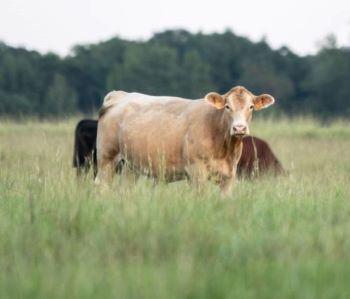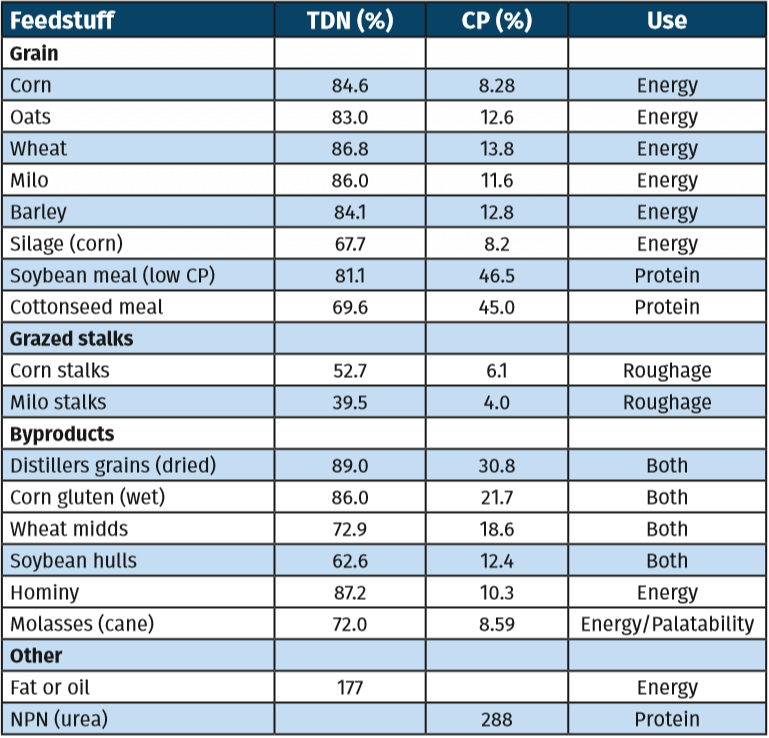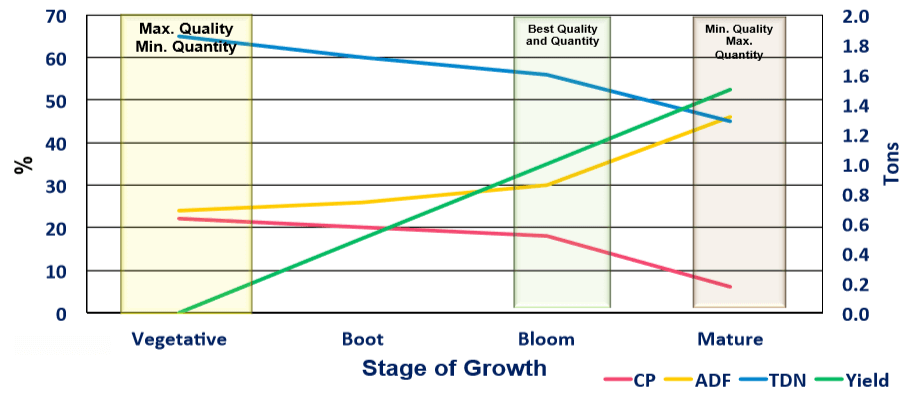Energy and Protein for Beef Cows
Apr 21, 2020

Article Provided by Elanco - by Dr. Sara Linneen
What is energy?¹
- Any nutrient that contains carbon.
- Energy is the calories required for animals to perform work, including all processes involving converting feed to product, along with heating and cooling the body.
- In beef cow nutrition, energy is expressed as total digestible nutrients (TDN). This is the sum of digestible crude protein, digestible crude fiber, digestible crude fat (multiplied by 2.25), and digestible nitrogen free extract.
What is protein?¹’²
- The only class of nutrients that contain nitrogen. Protein molecules also contain hydrogen, oxygen, and carbon.
- Building blocks of the body because they are essential for body functions, ranging from building and maintaining muscle, to hair growth, and hormone production.
- In beef cow nutrition, protein is expressed as crude protein (CP). This is the sum of natural protein and non-protein nitrogen (NPN), which are molecules such as urea that can be converted to protein by microbes (i.e. rumen bugs).
- The cow and their rumen microbes both have a protein requirement that need to be met for production success.
Common Feedstuffs (non inclusive and not accounting for grain processing)³

Interaction between protein and energy⁴
- In situations of low nutrient intake, such as when cows consume very low-quality forage, protein requirement of the microbes is not met and this reduces rate of passage through the rumen further reducing forage intake
- A positive associative effect is defined as supplementing enough protein to meet the microbe protein requirement which will in turn improve fiber digestion resulting in increased forage (energy) intake.
- If the rumen bugs can better digest forage, more forage will move through the digestive tract quicker; therefore, cows can eat more forage.
Demonstrating forage and protein interaction through forage quality and quantity over time⁵
This graph demonstrates how forage quality and quantity change throughout the growing season. Nutrient content of forages may become limiting at maturity leading to the dormant season. This is a great time to capitalize on the positive associative effect by supplementing cattle with protein.

Relationship between forage quality and feed intake⁶

Economic consequences of under or over feeding nutrients due to not sampung feedstuffs
Underfeeding nutrients during late gestation (protein, energy, or both) will reduce forage intake potentially resulting in:
- Pregnancy rate reduction of 10-13%, which equates to at least 10 fewer calves in a 100-cow herd.⁷
- Ten fewer calves = ~$10,000 annual missed sale profit
- Decreased wean weight by 15 lb.7
- 15 lb ($1.50 sale price) = $22.50 lost profit per calf
- 100 calves = $2,250 lost profit
- The greatest predictor of cow reproductive performance is body condition score at calving. It is costly to recover condition to ensure that she is in ideal BCS at calving:
- To increase her from a 4 to 5 BCS 90 days prior to calving, she will require 1% more protein and 6% more energy daily.⁸
Overfeeding (nutrients, protein, energy, or both):
- Costly because the body will use protein as an energy source (cost of protein > cost of energy)⁹
- Fat cows are also at greater risk for dystocia and lower pregnancy rate, which in combination with her increased feed requirements, makes her break even price more than a properly conditioned cow.¹⁰
1. Filed TG, Taylor RE. Scientific farm animal production. 9th edition, Pearson Education Inc. Chapter: Nutrients and Their Functions. 2008:269, 274, and 275.
2. Campbell JR, Kenealy MD, Campbell KL. Animal Sciences. 4th edition, McGraw-Hill Higher Education. Chapter: Principles of Nutrition. 2003:317.
3. NRC 2016. Chapter: Composition of selected feeds for beef cattle. Chapter range: 306-352.
4. NRC 2016. Chapter: Feed intake. Page 163.
5. Graph: Forage Quality and Quantity: Adapted from: National Research Council. Nutrient Requirements of Beef Cattle. 6th revised edition. National Academy Press. Washington DC. 1984.
6. NRC 2016. Chapter: Feed intake. Page 168.
7. Moriel P. Can we modify future beef calf production by changing cow nutrition during gestation? University of Florida extension publication. Available at http://dairy.ifas.ufl.edu/rns/2017/Moriel.pdf. Accessed on 8 Nov 2019
8. Gadberry, S. Feeding beef cows based on body condition score. University of Arkansas. https://www.uaex.edu/publications/pdf/mp373.pdf. Accessed 16 July 2019.
9. Lalman D, Richards C. In Oklahoma State University Beef Cattle Handbook. 6th edition. Chapter: Nutrient requirements of beef cattle. 2008:94.
10. Houghton PL, Lemenager RP, Horstman LA, Hendrix KS, Moss GE. Effects of body composition, and postpartum energy level and early weaning on reproductive performance of beef cows and preweaning calf gain. J Anim Sci. 1990;68:1438-1446.
© 2019 Elanco. EM-US-19-0200